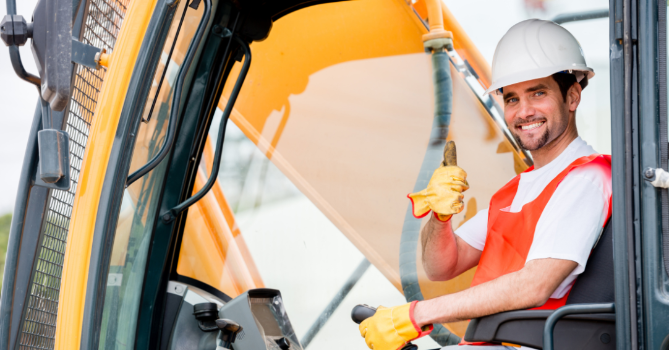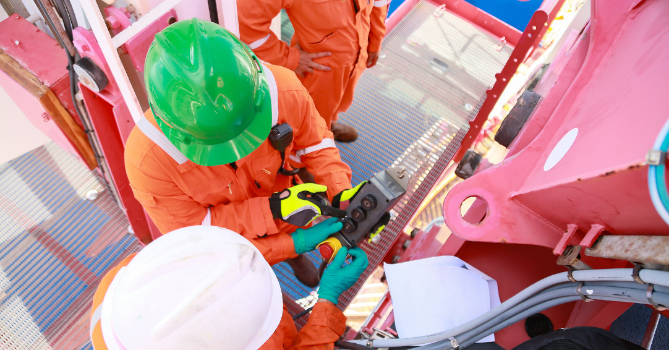.png)
Safety First: Crane Operations on Construction Sites
Construction sites are dynamic environments bustling with activity, where safety is paramount. In this comprehensive guide, we delve into the critical aspects of crane safety to ensure that every construction project prioritizes the well-being of workers and the surrounding community. From towering skyscrapers to intricate infrastructure projects, cranes play a pivotal role in modern construction, but their operation comes with inherent risks. By understanding and implementing best practices in crane safety, we can mitigate these risks and create a safer work environment for everyone involved. Join us as we explore the essential principles, regulations, and technologies that underpin crane safety in construction, empowering project managers, engineers, and workers to prioritize safety above all else. Let's embark on this journey together to ensure that safety always comes first on construction sites.
Crane safety is of utmost importance on construction sites, where these towering machines are indispensable yet pose significant risks if not handled properly. Understanding crane safety involves familiarizing oneself with various aspects, including crane types, components, and operational procedures.
Firstly, it's essential to recognize the different types of cranes commonly used in construction, such as tower cranes, mobile cranes, and overhead cranes. Each type has its specific functions and safety considerations, requiring operators to undergo specialized training for safe operation.
Moreover, comprehending the components of a crane is crucial for ensuring safe usage. From the boom and jib to the hoist and rigging equipment, each part plays a vital role in crane functionality and safety. Regular inspections and maintenance are necessary to identify and address any potential issues promptly.
Furthermore, understanding operational procedures is essential for safe crane usage. This includes proper load calculation, rigging techniques, and signaling protocols to prevent accidents such as overloading, tip-overs, and collisions. Operators must be well-trained and vigilant, following established safety standards and regulations at all times.

By grasping these fundamental aspects of crane safety, construction professionals can effectively mitigate risks and ensure a safe working environment for everyone involved in the project. Safety training programs, ongoing education, and adherence to industry best practices are essential for promoting a culture of safety on construction sites.
Investing in safety measures is a critical aspect of construction management, particularly concerning crane operations. These investments encompass various initiatives aimed at enhancing safety protocols and minimizing the risk of accidents on construction sites.
First and foremost, financial resources must be allocated to comprehensive safety training programs for crane operators and construction workers. Proper training ensures that personnel are adequately equipped with the knowledge and skills required to operate cranes safely, including understanding equipment capabilities, load limits, and emergency procedures.
Additionally, investments in state-of-the-art safety technology can significantly improve crane safety. This includes installing proximity sensors, anti-collision systems, and automatic overload detection mechanisms on cranes to prevent accidents caused by human error or equipment malfunction. Moreover, integrating advanced monitoring and surveillance systems allows for real-time tracking of crane operations, enhancing situational awareness and enabling timely intervention in case of potential hazards.
Furthermore, investing in regular maintenance and inspection protocols is essential for crane safety. Establishing a robust preventive maintenance program ensures that cranes are routinely inspected for signs of wear and tear, structural integrity, and mechanical failures. Timely repairs and replacements of worn-out components help prevent catastrophic accidents and extend the lifespan of crane equipment.
Moreover, financial investments in safety culture initiatives are crucial for fostering a mindset of safety among all personnel on construction sites. Implementing reward programs for adherence to safety protocols, conducting regular safety meetings and toolbox talks, and providing incentives for reporting safety hazards encourage a proactive approach to safety among workers.
Overall, investments in safety are not only a moral imperative but also a sound business decision for construction companies. By prioritizing safety measures and allocating resources to training, technology, maintenance, and culture-building initiatives, organizations can create safer work environments, reduce the risk of accidents, and protect the well-being of their workforce.
Addressing safety challenges in crane operations is paramount to ensuring the well-being of construction workers and mitigating potential risks on-site. Several key strategies can be implemented to address these challenges effectively.
Firstly, conducting thorough risk assessments and job hazard analyses is essential to identify potential safety hazards associated with crane operations. By evaluating factors such as site conditions, environmental factors, and equipment specifications, construction managers can develop comprehensive safety plans tailored to specific work environments.
Secondly, implementing stringent safety protocols and procedures is crucial for minimizing the risk of accidents. This includes establishing clear communication channels, implementing safety checklists, and enforcing adherence to established safety guidelines among crane operators and construction personnel.
Moreover, providing ongoing training and education to crane operators and site workers is vital for enhancing safety awareness and promoting best practices. Training programs should cover topics such as equipment operation, load handling techniques, emergency response procedures, and hazard recognition to ensure that personnel are equipped with the knowledge and skills necessary to perform their duties safely.
Furthermore, leveraging technology and innovation can help address safety challenges in crane operations. Utilizing advanced safety features such as proximity sensors, anti-collision systems, and remote monitoring devices can enhance situational awareness and prevent accidents caused by human error or equipment malfunction.

Lastly, fostering a culture of safety within the organization is essential for promoting accountability and maintaining high safety standards. Encouraging open communication, empowering workers to report safety concerns, and recognizing and rewarding safety-conscious behavior can help create a positive safety culture where safety is prioritized by all stakeholders.
By implementing these strategies and addressing safety challenges proactively, construction companies can create safer work environments and minimize the risk of accidents in crane operations.
In the unfortunate event of accidents occurring on construction sites involving cranes, it is essential to have effective procedures in place to respond promptly and appropriately to ensure the safety of personnel and minimize the impact of the incident.
The first step is to establish clear emergency response protocols that outline the actions to be taken in the event of a crane-related accident. This includes immediately ceasing crane operations, securing the area to prevent further accidents or injuries, and notifying emergency services for assistance.
Once emergency responders arrive at the scene, they will assess the situation and provide medical assistance to any injured individuals. It is crucial to have trained first aid personnel on-site who can administer immediate care to injured workers until professional medical help arrives.
Simultaneously, a thorough investigation should be conducted to determine the root cause of the accident and identify any contributing factors. This may involve reviewing safety procedures, inspecting equipment for defects or mal functions, and interviewing witnesses to gather relevant information.
Following the accident, it is essential to implement corrective measures to prevent similar incidents from occurring in the future. This may involve revising safety protocols, providing additional training to personnel, or making modifications to equipment or work processes to address identified hazards.
Furthermore, communication with all stakeholders, including workers, management, regulatory authorities, and the public, is essential to ensure transparency and accountability throughout the incident response and investigation process.
By taking swift and decisive action to address accidents involving cranes, construction companies can demonstrate their commitment to safety and minimize the risk of future incidents, thereby protecting the well-being of workers and maintaining a safe work environment.
In conclusion, prioritizing crane safety in construction is not just a legal obligation but also a moral imperative. By understanding the importance of crane safety, making strategic investments in safety measures, addressing safety challenges proactively, and effectively dealing with accidents when they occur, construction companies can create safer work environments for their employees and reduce the risk of costly accidents and injuries. Moreover, by prioritizing safety, companies can enhance their reputation, attract skilled workers, and improve overall productivity. It is crucial for construction industry stakeholders to work together collaboratively to promote a culture of safety and ensure that crane operations are conducted with the utmost care and caution. By doing so, we can build a safer and more sustainable future for the construction industry and the communities it serves.